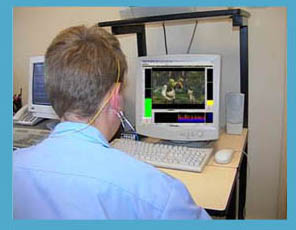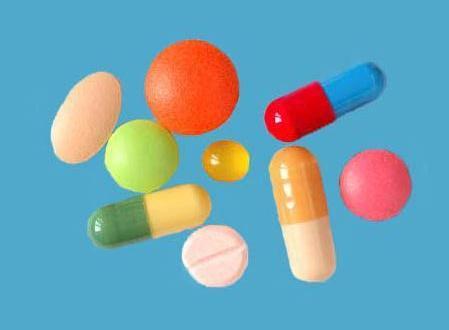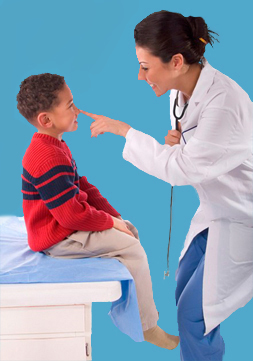Help With ADHD Doctors and Therapists
(also known as ADD) are in many cases treated as a disease or diagnosed as a mental disorder. It is actually a developmental neurobehavioral disorder frequently found in children and often carried into adulthood.
When seeking an evaluation or treatment for ADHD, it is important to see a qualified, licensed healthcare professional. In addition to ensuring that a particular professional has the required training, it is also important to work with a professional who has experience in dealing with this disorder.Multi-Modal and Combined-Modalidty and ADHD
Combined-Modality Is Simply two or more types of treatments used to supplement each other. Multi-Modal (For Children and Teens) Effective treatment of ADHD in children and teens requires a comprehensive approach that professionals call Multi-Modal. This means that the best outcomes are achieved when multiple interventions work together as part of a comprehensive treatment plan. The elements of a Multi-Modal treatment approach include:• Parent training
• Behavioral intervention strategies
• An appropriate educational program
• Education regarding ADHD
• Medication, when necessary
Positive behavior intervention can be critical. The most important techniques are consistency and positive reinforcement, in which the child is rewarded for desired behavior. Classroom success may require a range of interventions, from making minor adjustments in the regular classroom to requiring special education programs. For many children with ADHD, medication may be an integral part of treatment. Both stimulant and non-stimulant medications are now available to physicians and parents. Multi-Modal (For Adults) Treatment for adults with ADHD also involves a comprehensive approach. This usually means a team approach works best. The team includes not only the adult with ADHD, but also health-care professionals, a spouse/significant other, and others in the adult’s immediate family. Adults can benefit from learning to structure their environment as well as from vocational counseling. Short or long-term psychotherapy can also help. Medication may also be part of the treatment to improve the symptoms of ADHD, as many adults report that this helps them gain more control and organization in their lives.
To Find A Doctor Or Therapist Near You
Comorbidity and ADHD
Margaret Austin, Ph.D., Natalie Staats Reiss, Ph.D., and Laura Burgdorf, Ph.D. Updated: Nov 5th 2007 Comorbidity is the medical term for two or more disorders that occur at the same time. In general, individuals affected by ADHD often have other behavior disorders that impact their ability to function successfully. The comorbidity of ADHD with other disorders is between 60% and 80%. Research has shown that mood (e.g., depression) or anxiety disorders are present in 1/4 of all children with ADHD. These other disorders compound the typical issues associated with the symptoms of ADHD. Many people with ADHD also develop problems regulating their emotions in response to their disorder. Other research has shownthat individuals with ADHD, both adults and children, are often impacted by other problems, such as increased risk-taking,
substance abuse, and criminal behavior. When comorbid conditions are present, it can make the diagnosis of ADHD
much more difficult to pinpoint and the symptoms harder to treat. Some comorbid disorders that commonly
occur alongside ADHD are:
• Oppositional Defiant Disorder
• Depression
• Anxiety
• Bipolar Disorder
• Conduct Disorder
• Sensory Integration Disorder
• Learning Disorder
• Early Speech/Communication problems
To Find A Psychologist Or Psychiatrist Near You
Types of Therapy for ADHD
Children, ADHD and Stimulant Medication
Allan Schwartz, LCSW, Ph.D. Updated: Oct 2nd 2009A lot of controversy continues to swirl around the issue of ADHD and stimulant medications, such as Ritalin, Adderal and others. Parents worry about such things as their children suffering liver damage, addiction to stimulants, stimulant abuse or becoming involved in the use of illicit drugs as a result of using stimulants. These worries are not unrealistic. However, the dangers must be weighed against the potential benefits of stimulants in treating ADHD. In addition, the consequences of ADHD going untreated are also potentially dangerous. A new study support the fact that these medications are enormously beneficial for youngsters with this disorder.
Psychopharmacological Treatments and ADHD
Nearly 80% of the children with ADHD are treated with pharmacological treatments (Zito, Safer, dosReis, Magder, Gardner & Zarin, 1999; Wolraich, Lindgren, Stronquist, Milich, Davis & Watson, 1990). Additionally, children with a comorbid conduct disorder receivemedication at a higher rate than children with ADHD alone.The two major groups that see children with ADHD are primary care doctors and psychiatrists. While primary care physicians perform 75% of office visits, psychiatrists perform 25% of the visits. This is not to say that 25% of the children are seen by psychiatrists, as the primary care physician will see a child on average 3-4 times per year while a psychiatrist sees a child on average 1 or more times per month (Zito, Safer, dosReis, Magder, Gardner, Zarin, 1999).
The prescribing patterns between the primary care doctor and psychiatrist are vastly different, as well. The primary care physician generally prescribes a single stimulant medication. The psychiatrist may prescribe a single stimulant medication, but is much more likely to prescribe a combination of medications, up to 50% of the time (Zarin, Suarez, Pincus, Kupersanin, & Zito, 1998). This is likely due to referrals from primary care physicians who were unable to manage the children through monotherapy or comorbid disorders. There is an approximate 80% success rate for pharmacological management ofADHD (Smucker & Hedayat, 2001).
The use of multiple medications in children has not been well studied, however, and some researchers have questioned it. While there has been undoubtedly positive effects for some children. Children with concurrent attentional, affective and tic disorders may be prescribed various drugs, including stimulants, antidepressants, clonidine and mood stabilizers. Almost no data, however, exists about the efficacy and safety of these combinations, and the rationale for their use is not always sound. (Vitiello & Hoagwood, 1997). In the MTA study, Pelham (1999) found that children treated under strict medication regimens by psychiatrists did better than children treated by community physicians who treated children with medication. However, the psychiatrists utilized medications that were at dosages 65% higher than the community physicians (per study protocol), along with an attendant increase in side-effects. These side-effects include insomnia, decreased appetite, stomach pain, headache, emergence or worsening of tics, decreased growth velocity, tachycardia, blood pressure elevation, rebound or deterioration of ADHD behaviors when the medication wears off, emotional lability, irritability, social withdrawal and flattened affect (Smucker and Hedayat, 2001).In the MTA study, Pelham (1999) found that children treated under strict medication regimens by psychiatrists did better than children treated by community physicians who treated children with medication. However, the psychiatrists utilized medications that were at dosages 65% higher than the community physicians (per study protocol), along with an attendant increase in side-effects. These side-effects include insomnia, decreased appetite, stomach pain, headache, emergence or worsening of tics, decreased growth velocity, tachycardia, blood pressure elevation, rebound or deterioration of ADHD behaviors when the medication wears off, emotional lability, irritability, social withdrawal and flattened affect (Smucker and Hedayat, 2001).
In some studies, stimulants which have been optimally titrated have been given twice per day, morning and afternoon. This has resulted in positive effects onbehavior at school, but parental reports show that the symptoms are still apparent in the home. Additionally, the some side effects are acute, but others may not be evident at the beginning of themedication regime. This partially may be a contributing factor to the lack of adherence to the medication programs, and why families frequently abandon the medication route of treatment , as discussed later. In one 4-month study, 10% of participants withdrew due to side-effects (Schachar, Tannock, Cuningham & Corkum, 1997).
To Find A Clinical Provider Near You
Social Problems and ADHD
Competent social skills are essential to life success. Unfortunately, individually, children with ADHD manifest a multitude of socialproblems. According to Pelham and Milich (1984), they are less often chosen by peers to be best friends, partners in activities or
seatmates. Teacher reports of social interactions of children withADHD describe fighting, interrupting and being disliked or neglected
(Pelham & Bender, 1982), while Barkley (1981) reported that parents in 80% of the cases felt their children had severe social problems. Waddell (1984) believes that this is a vicious circle, in which social problems worsen as the child grows older, with behavioral excesses leading to rejection and social skill deficits leading to low acceptance. Peer relationships have been found to be an important predictor of positive adult adjustment andbehavior, and lowered self-esteem from decreased peer relationships in childhood carries on to adulthood (Glow & Glow, 1980). Children with ADHD have been shown to have effects on their environments as well. Increased rates of negative teacher-child interactions among the classroom as a whole were reported in classrooms where there were children with attention problems (Campbell, Endman & Bernfield, 1977).
To Find A Therapist Near You
Psychotherapy and ADHD
The most common form of therapy with children with ADHD is behavior therapy. This is a set of interventions that have a common goal modifying the environment to change the child's behavior. This is often done in both the home and school, and includes more structure, closer attention, and limitations of distractions (Clinical practice guidelines, 2001). The child is given a set of desired behaviors, and is rewarded positively for performing the desired behaviors, and given consequences for failing to meet the desired behaviors. This serves to shape the behaviors over time.
In studies, children who were treated with both behavioral and medication therapies showed more improvement than those who were treated with medication alone or with behavioral therapies alone, and had greater parental satisfaction (Jensen, Arnold, Richers, 1999). In the National Institutes of Mental Health www.nimh.nih.gov 14-month study of treatment options for children with ADHD, those children who received combined treatment with medication (administered by psychiatrists) and behavioral therapy were shown to have a higher level of functioning than children treated community practitioners, and parents preferred the results of the two groups in which the children participated in behavioral treatments (behavioral alone or combined with medication) over medication by psychiatrist or treatment by a community practitioner (Pelham, 1999). During the course of this study, in addition, the although the children in both the medication management only group and the medication management and behavioral therapy combined group were started on the same dose of medication, their ending doses of medication were significantly different. At each monthly visit, the children were assessed for the need to adjust medication, and doses were increased (never decreased) based upon reports and deterioration of symptoms as needed. The children in the groups receiving both types of therapy, on average, at the end of 14-months were on 20 to 50% lower doses of medication than their counterparts in medication only therapy groups (Pelham, 1999). Additionally, The children receiving behavioral therapy alone had as much success as the children who were receiving services from community providers only. And, this was achieved with the behavioral therapy being phased over the last 5 months of the study, which ran a total of 14 months.
The most successful group was the combined behavioral therapy and psychiatrist managed pharmacotherapy. According to Conners et al. (2001), when all 19 endpoints from the MTA study are combined and used as a single effect, the combined therapy group shows a statistically significant advantage over all other groups in the study.
Behavior Modification and ADHD
Behavior Modification works by rewarding desired behavior with privileges or rewards while discouraging bad behavior with removal of privileges or adding appropriate punishment. Most of these systems use a computerized scoring program, scheduling software and tapes. By letting the parent create a list of behaviors they consider to be undesirable the child will receive negative scores. If the child behaves well by performing their chores with good behavior this counts towards a positive score.
Cognitive-Behavioral Therapy and ADHD
is a form of psychotherapy that emphasizes the important role of thinking in how we feel and what we do.Cognitive-behavioral therapy does not exist as a distinct therapeutic technique. The term "cognitive-behavioral therapy (CBT)" is a very general term for a classification of therapies with similarities. There are several approaches to cognitive-behavioral therapy, including Rational Emotive Behavior Therapy,
Rational Behavior Therapy, Rational Living Therapy, Cognitive Therapy, and Dialectic Behavior Therapy.
Cognitive behavioral therapy is a form of treatment which helps people make concrete, observable changes in their lives. There is a focus on the ways a person's thoughts and attitudes affect his feelings and behavior. The premise is that some people develop negative and distorted beliefs about themselves which interfere with their functioning. This can lead to depression and anxiety, as well as the procrastination that affects so many adults with Attention Deficit Hyperactivity Disorder. Cognitive therapy helps people examine the beliefs that are holding them back and learn strategies to counteract those beliefs. For more information on Cognitive Behavioral Therapy visit the National Association of Cognitive-Behavior Therapy http://www.nacbt.org/whatiscbt.htm
Neurotherapy and ADHD
The Neurophysiology of ADHDIt is widely accepted in Neuroscience research that ADHD is associated with underlying neurophysiological dysfunctions,
mostly involving the frontal lobes and central cortex. If these dysfunctions can be rectified then children with ADHD may
be able to process information like children without ADHD, enabling them to acquire cognitive skills and coping strategies
that children without ADHD acquire normally through the course of growing up. Neuroscientists have known since the mid
1970s that the EEG (brainwaves) of children with ADHD contained an excess of slow (theta) waves and relatively less of
the fast (beta) waves. Hence they have a high theta/beta ratio (Janzen, Graap, Stephanson, Marshall, & et al., 1995;
Linden, Habib, & Radojevic, 1996; Lubar, 1985; Lubar, 1991; Lubar, 1995; Lubar & Lubar, 1984; Satterfield, Schell, Backs,
& Hidaka, 1984; Steinhausen, Romahn, & Gobel, 1984; Tansey, 1991; Watson, Jacobs, & Herder, 1979). Researchers have
been developing techniques to enable children and adults with ADHD to retrain their brainwaves.
What is Neurotherapy
Neurotherapy is also called Neurofeedback training or brainwave (EEG) biofeedback. During typical training, one or two sensors are placed on the scalp and one on each ear lobe. Then, high-tech electronic equipment provides real-time (instantaneous) audio and visual feedback about brainwave activity. The sensors measure the electrical patterns coming from the brain--much like a physician listens to someone's heart from the surface of the chest. No electrical current is put into the brain. The brainwave patterns are relayed to the computer and recorded.
Ordinarily, we cannot influence our brainwave patterns because we lack awareness of them. However, when you can see your brainwaves on a computer screen a few thousandths of a second after they occur, it gives you the ability to influence and change them. The mechanism of action is called operant conditioning. We are literally reconditioning and retraining the brain. At first, the changes are short-lived, but the changes gradually become more enduring. With continuing feedback, coaching, and practice, we can usually retrain healthier brainwave patterns in most people. It is a little like exercising or doing physical therapy with the brain, enhancing cognitive flexibility and control.
Thus, whether the problem stems from ADD/ADHD, Autism, a learning disability, a stroke, head injury, deficits following neurosurgery, uncontrolled epilepsy, cognitive dysfunction associated with aging, depression, anxiety, obsessive-compulsive disorder, or other brain-related conditions, Neurotherapy training offers additional opportunities for rehabilitation through directly retraining the brain. The exciting thing is that even when a problem is biological in nature, we now have another treatment alternative than just medication. Neurotherapy is also being used increasingly to facilitate peak performance in “normal” individuals and athletes. Frank H. Duffy, M.D., a Professor and Pediatric Neurologist at Harvard Medical School, stated in an editorial in the January 2000 issue of the journal Clinical Electroencephalography that scholarly literature now suggests that Neurotherapy “should play a major therapeutic role in many difficult areas. In my opinion, if any medication had demonstrated such a wide spectrum of efficacy it would be universally accepted and widely used” (p. v). “It is a field to be taken seriously by all” (p. vii). Visit ISNR The International Society for Neurofeedback and Research for more information on Neurofeeback and its
benefits visit: http://www.isnr.org/.
To Find A Clinical Provider Of Neurofeedback
Medications and ADHD
Medication has long been considered the gold standard of ADHD treatments and there are consequently many options to choose from.ADHD medications come in two varieties: stimulants and antidepressants, with stimulants being prescribed as the first course of treatment.
The side effects of stimulant-type ADHD medications can include increased heart rate and blood pressure, tremors, changes in mood, confusion, paranoia, hallucinations, delusions and irregular breathing.The main drug prescribed for ADHD is Methylphenidate; it belongs to the group of medicines called central nervous system (CNS)
stimulants. Methylphenidate drugs (like Concerta, Ritalin LA, Focalin XR, or Metadate CD) increase the level of neurotransmitters in the brain called dopamine and norepinephrine. Neurotransmitters are chemicals that assist in sending messages between nerve cells in the brain. In addition to pills, methylphenidate is also available in a patch, called Daytrana that can be placed directly on the skin allowing medicine to be absorbed. Amphetamines (such as Adderall, Adderall XR, Vyvanse, Dextrostat, and Dexedrine) treat ADHD in ways similar to methylphenidate medications.
Antidepressants are a second-line therapy to be used when the stimulants are not working. Tricyclic antidepressants work in the body to prevent the nerves from taking up the chemicals such as dopamine and norepinephrine believed to be low in the brain in ADHD. The medication allows these chemicals to stay around longer in the blood and be used by the body in a more productive manner. Two tricyclic antidepressants frequently prescribed are – Imipramine (The most commonly encountered side effects associated with Imipramine include fast heart rate, blurred vision, urinary difficulty urinating, dry mouth, constipation, weight gain or loss, and low blood pressure when standing.) and Desipramine (The most commonly encountered side effects associated with Desipramine include fast heart rate, blurred vision, urinary retention (difficulty urinating), dry mouth, constipation, weight gain or loss, and low blood pressure upon arising.). There are other medications that used but not approved by the FDA, including Bupropion (The most common side effects associated with Bupropion are agitation, dry mouth, insomnia, headache, nausea, constipation, and tremor.), Clonidine (The most common side effects noted with Clonidine are tiredness, lethargy, drowsiness, constipation, and dry mouth. Headache, dizziness, fatigue, and weakness also occur with Clonidine.), and Guanfacine (The most common side effects noted with Guanfacine are dizziness, drowsiness, headache, constipation, gas pains, diarrhea, loss of appetite, fatigue, and nasal congestion may occur.)
To Find A Clinical Provider Near You



ADHD And ADD


Doctors and Therapists for Adult and Childhood ADHD
Nutrition And Diet Neurofeedback Blog Become A Directory Member Cognition Quest Resources ADHD Coaching
This Website is brought to you by Cognition Quest Resources. Designed and Created by The Web Source at Cognition Quest Resources.
All rights reserved.
About Us Advertising Policy Privacy Policy Link To Us

ADHD Doctors ADHD Therapists


Doctors and Therapists
There
are several types of professionals who typically diagnose ADHD. These
include: physicians (especially psychiatrists, pediatricians, and
neurologists), psychologists, social workers, nurse practitioners, and
other licensed counselors or therapists (e.g. professional counselors,
marriage and family therapists, etc.).
